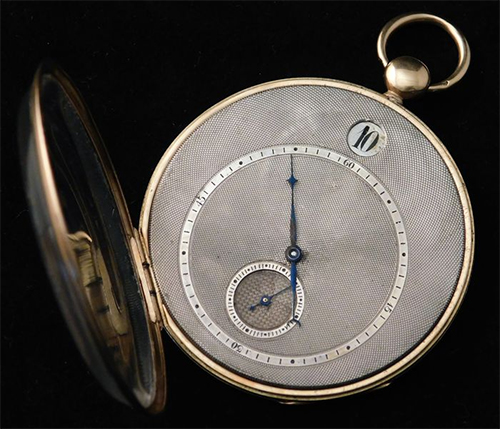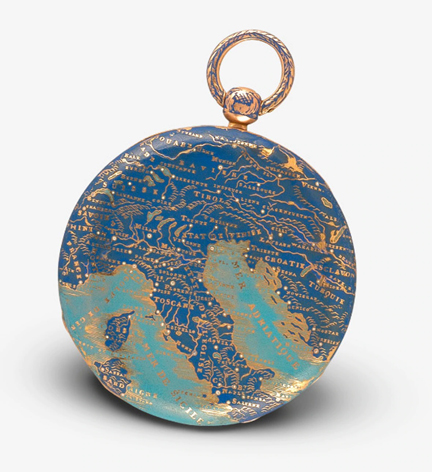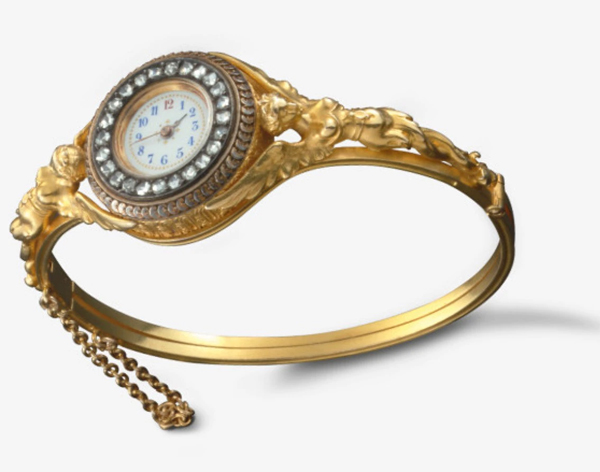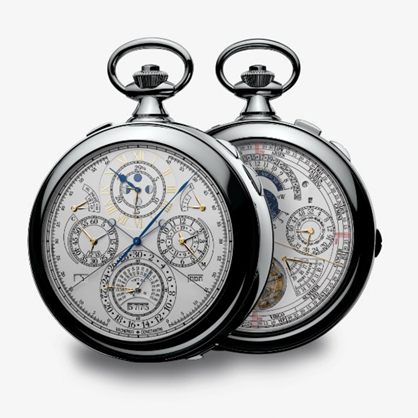Vacheron Constantin
- 28th Sep 2020
- 2145
- 0

Few brands can boast of having been around for 3 centuries. Even fewer can do so in the watchmaking industry, which keeps being turned on its head every-so-often with new materials and technologies being introduced to take the craft to newer heights. Vacheron Constantin is one such brand having completed 265 years of operation this year. But longevity isn’t the only interesting thing about this brand. It takes skill, effort and innovation to survive and thrive for so long, through revolutions, world wars, depressions and rapid industrial development.
In Geneva, 1755, a 24-year-old master watchmaker, Jean-Marc Vacheron hired his first apprentice Jean Francois Hetier. The brand’s official website calls this contract “Vacheron Constantin’s birth certificate”. Vacheron held close associations with thinkers like Jean Jaques Rousseau and Voltaire and his craft was inspired by their ideas. He was the first to produce engine-tuned dials and this invention was subsequently adopted by all great watchmakers.
In 1785 he was succeeded by his son Abraham, who kept the house afloat through the French Revolution snd French occupation of Geneva. In 1810, just like his father, he passed on the craft and trade to his son, Jacques Barthelemi Vacheron.
Jacques was an innovator in his own right. In 1812, he created a quarter-hour timepiece with two different musical tunes, thus slowly complicating his watches. These watches were beautifully decorated with gold cases, blued-steel serpentine hands, enamelled dials and engraving. He also expanded his market by exporting to France and Italy. The year 1819 brought with it the realisation that Jacques could no longer grow the business without further increasing sales. Enter François Constantin, the other namesake of the brand. He had the experience and connections necessary to take the business to the next level. He spent the next three decades travelling the world, bringing Vacheron to international markets. He especially established the company in the American market. His partnership with Jaques resulted in the company being renamed to Vacheron et Constantin. According to their official website, in a letter dated July 5, 1819, he wrote a letter to Vacheron from Turin. In the letter was the phrase “Do better if possible, and that is always possible.” This became the company’s official motto and guiding principle to date.
1824 was an important year for them, with the launch of the first-ever jump-hour pocketwatch. While the year of this design is conflicted, most sources agree it was in 1824. This design marked a new high in manufacturing watches world-over. Instead of the arms moving from one hour to the next in a continuous manner, the dial had a small window which jumped to the next hour every 60 minutes. This design was miles ahead of its time and even more impressive considering most of it would have been handcrafted.

The history of the brand up to this point seems pretty straightforward. Why, then, was the Maison so popular? The answer lies in its design and finishing. The attention to detail and intricacy was unparalleled. Take this pocketwatch for instance (add image no.1 below this paragraph). It features a hand-engraved map of Italy drawn using the champlevé technique of engraving enamel and filling it with colours. Not only did the brand meet their own standards, they also matched the level of perfection and precision expected by Genevan tradition.

A watchmaker by the name of Cameron Weiss, founder of Weiss Watch Company gives us an insight into how Vacheron craftsmanship maintains its highest standards. On a podcast titled Watch and Listen, he breaks down the history and current state of the enterprise. While being trained to work at a department responsible for repairs, he was made to take apart and put the same watch back together over and over again. Every single time he was expected to ensure that none of the parts had any damage. Even the ones on the inside, which the customer will never see are examined to remove the smallest of scratches and every last dust particle. Any part that is damaged, even if the damage is purely aesthetic and not functional (for the inside of the watch), is thrown out. This is what sets them apart — striving for perfection at levels that won’t even affect the client’s experience or the functioning of the watch, simply because perfection is key. Their attention to detail is exemplified in the Ref. 4072 chronographs, where the movements were hand-finished despite the closed casebacks of the era. This displays the house’s expertise in graining, polishing and anglage.
One of the brands most monumental innovations is the Pantograph which, in their own words, launched a technical renaissance. Georges-Auguste Leschot, a watchmaker and innovator was employed by the house. He used an existing machine used for printing multiple copies of books and modified it to help with manufacturing watches. The mechanism of this machine enabled the user to make a pattern or engraving of a larger size, which would be imitated in a scaled-down size to fit watches. This machine was of utmost importance in helping create a sense of uniformity in the brand’s movements and other parts. This reduced the inevitable differences across copies of the same watch caused due to human error, thus increasing uniformity. It industrialised repeatable production and made watch parts interchangeable since each watch didn’t have to be created from scratch each time and have the minute differences that made their parts just slightly incompatible with each other. The Pantograph also won the Rive Prize’s gold medal, awarded by the arts society in 1844, which termed it “the discovery of the most value to the Genevese industry.”
1869 came with a major upheaval to the watchmaking industry. The marine chronometer was introduced and brought with it an era of scientific watchmaking. Vacheron Constantin also made chronographs. 19th-century Europe encouraged innovation in their niche industries by awarding prizes. Vacheron also entered its watches in the first chronometry competitions at the Geneva Observatory and began a century of breaking records. The firm is also credited with making the first non-magnetic timepiece.
The current logo of the brand was created in 1880. The company website describes the logo as one chosen to represent the company’s quest for precision. “It was taken from the design of a movement component mounted on the barrel cover to secure the most constant force from the spring and thereby achieve a better rate.” This logo has since been used in very subtle and clever manners, like putting a small gold logo on one corner of the frame of a silver square watch instead of on the dial, thus making a mark without being flashy.

A lady’s wristwatch deserves a special mention here. It was unique for a number of reasons, the first being that pocket watches were still more popular. More importantly, the design of the bracelet was extremely intricate and symmetrical, with two winged goddesses on each side of the bezel. A winding crown was sure to disturb the balance of this design. To avoid this, the company made a device that would use the diamond-studded bezel as a crown. So to set the time, one would have to turn the bezel.
The company had customers comprising of royalty and the highest echelons of businessmen and socialites. Some notable customers were Queen Mary of Romania, Henry and William James, and Prince Napoleon, the grandson of Jerome Bonaparte. To increase business and have a proper storefront to give their customers the best experience, Vacheron inaugurated their first store in 1906. Before this, they would invite customers to the upper floors of the same building. The brand was also later commissioned by royalty from around the world, like the King of Patiala and the King’s of Egypt. It is also rumoured that the 3rd Faberge egg had a Vacheron Constantin timepiece inside it.
The following year, 1907, marked one of the brand’s most legendary watches — The Royal Chronometer. What set this watch apart beyond its striated gold case was its unmatched accuracy. It was tough and reliable beyond measure and most importantly, it was able to weather in climates that were usually considered detrimental to the proper functioning of a watch.

In 1921, another important wristwatch was made, this time to capture the American market. While pocket watches were still dominating. Wearing a wristwatch of this sort symbolised a certain modernity which found popularity and demand in American clientele. A distinguishing feature of this watch was the positioning of the crown and of the numbers as a result. The crown was placed at the 1 o’clock position, on one corner of the rectangular frame. To match this the 12 o’clock mark had to be moved to the same corner, making the dial titled. This model gained immense popularity and was only produced for 10 short years.
1929 was a landmark year, with the release of an exclusively commissioned piece for King Fuad I, the King of Egypt. It was gifted to him by Swiss residents. The Grand Complication Pocket-Watch boasted of a chronograph, a perpetual calendar, a minute repeater and a grand/small-strick clockwatch. “The yellow-gold watch had a silver dial with 10 arabic numerals in black, an aperture for days and dates at 12 o’clock, a subdial for the months and years at 9 o'clock, a 30-minute counter at 3 o'clock and the ages and phases of the moon with the small seconds at 6 o'clock.” This was followed in 1946 (some sources say 1935), by a watch for King Farouk, King Fuad’s son. Dubbed “The Farouk”, it took 5 years to make and was one of the most complicated watches in the 20th century with 14 complications and 820 distinct parts. Among other features, it included a moon phase and moon age indicator, an alarm and two power reserves.
Constantin had died in 1854 and Vacheron in 1863. The ownership of the company was scattered post their deaths, being passed along to a series of heirs, including two women at one point. In 1936, Charles Constantin was one of the first people of his family to take over the company, since the 1850s. He was brought in just as the Depression had begun to affect the company. In 1940, Georges Ketterer bought a majority stake in the company, from Charles Constantin, effectively ending the 119-year family dynasty. He helped keep the company profitable through World War 2. Somewhere along the line, the name changed from Vacheron and Constantine to Vacheron Constantine since neither family was involved anymore.
The watchmaker achieved another landmark breakthrough in 1955. On the occasion of their bicentennial, they released the thinnest ever movement at 1.64mm. The movement is iconic as even today, movements continue to be of around this thickness in spite of all supposed technological advancements. In 1972, Vacheron Constantin won the coveted Diplôme du Prestige de la France, awarded by the French government. It is the first watchmaking company to win this honour.
The 1970s saw the quartz-movement. There was a surge in the popularity of sports watches. While Vacheron specialised in dress watches, it came out with the now-iconic 222, named after the number of years the company completed in that year. This was 5 years after the Nautilus and the Royal Oak were released. This model was a predecessor of the famous Overseas series that the brand is known for. There were only 500 of these made in steel and 100 more in gold. This watch remains sought after by Vacheron aficionados due to the limited numbers made.
In 1987, the brand was purchased and arguably revived by the former Oil Minister of Saudi Arabia — Sheik Ahmed Zaki Yamani, a watch aficionado. The final transfer of the company happened in 1996 when it was purchased by the Richemont Group who hold the company to date.
A few more landmark launches include one in 2005 for a quarter-millennium celebration where they released five creations to pay tribute to the art of watchmaking. This included the Tour de l’Île, a model that combines 16 horological combinations inside a movement with an R&D cycle of 10,000 hours. A total of seven pieces were made and it is the most complicated wristwatch ever made as self-professed by the Maison.
The brand’s latest achievement is the Ref.57260, a piece commissioned by an unknown buyer and rumoured to cost around USD 5 million. It is the most complicated watch ever made. It took a total of 8 years to conceive and has a total of 57 complications, 2800 components and 242 jewels. It is also around 98mm in diameter. The 57 complications include — 6 Time measurement functions, 7 Perpetual calendar functions, 8 Hebrew calendar functions, 1 Lunar calendar function, 1 Religious calendar function, 4 functions of 3-column wheel chronograph, 7 alarm functions, 8 Westminster carillon striking functions and 6 other functions. This list should give an idea about the R&D and precision that went into making this piece.

So where is Vacheron Constantin now? Why do we not hear of it like we do of Philip Patek in rap songs? Why is it a rarity to spot on people? One reason for this is that the company specialises in dress-watches in a world obsessed with sports watches. Thus the clientele of the company is of a specific type. Vacheron also produces a limited number of pieces each year, around 23,000 compared to Patek’s 60,000. While 23,000 is a lot more than some, it is still a small number for their contemporaries. Additionally, many Vacheron pieces end up back at the Maison’s. The company has made a habit of buying their own watches and re-selling it at auctions. They also have a service where they can store your watch for you. So many people are owners just by name but not by possession. Furthermore, Maisons can take years to repair pieces, giving even more chances for the watch to be away from the owner. This is telling of the clientele the brand has developed. It is a collector’s brand. People who appreciate the finest Genevan traditions of watchmaking. Cameron Weiss also says that this brand is for people who don’t want to flaunt their belongings. For watches of such rarity and complication, who would want to risk ruining or losing them by wearing them in public? So if you are the type of customer who wants to effortlessly set themselves apart without having to wear large logos all over your person, this is the brand for you. And if you are a collector, the brand must already be on your wishlist.
 Isha Deshmukh
Isha Deshmukh


Comments
No comments yet.
Add Your Comment
Thank you, for commenting !!
Your comment is under moderation...
Keep reading luxury post